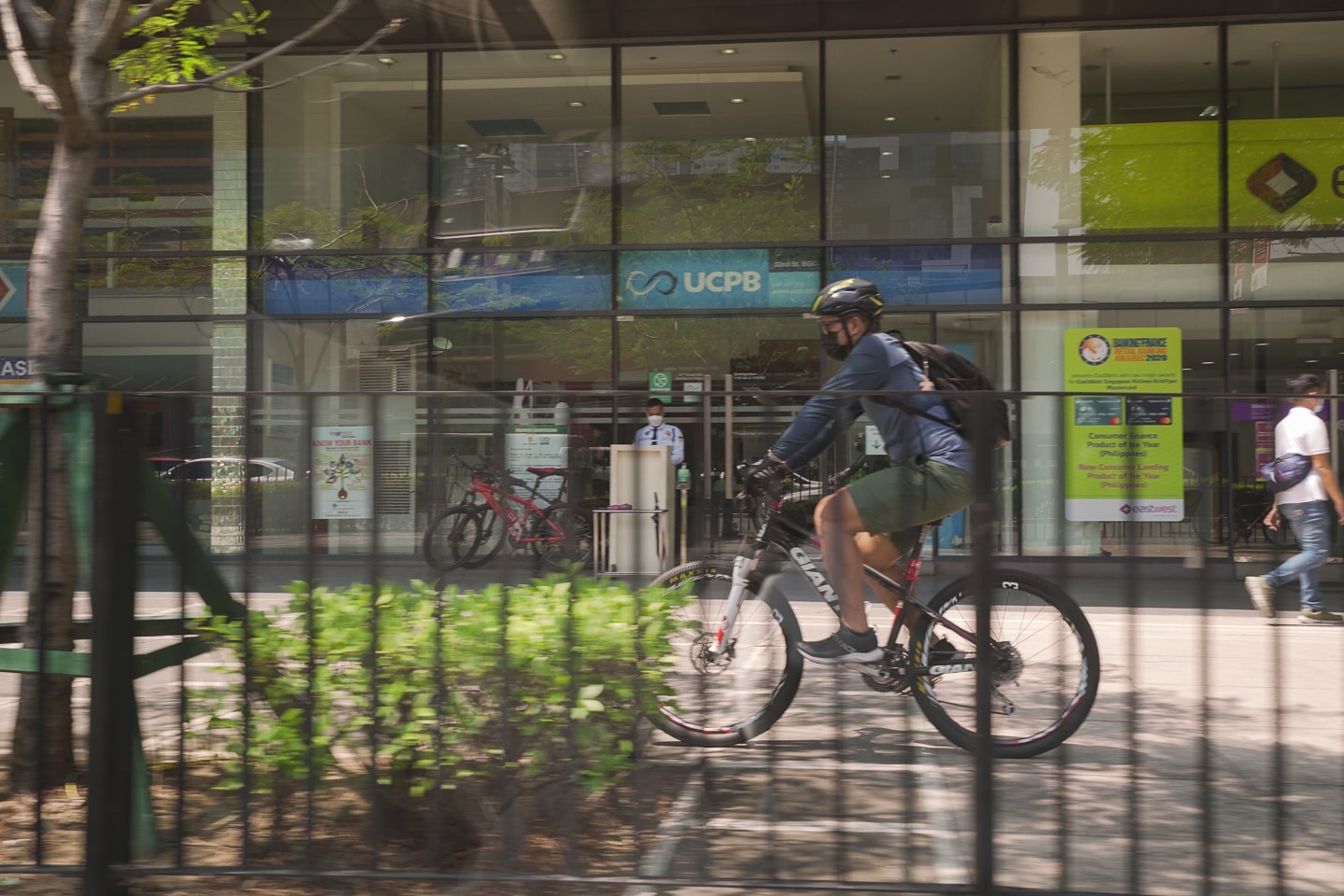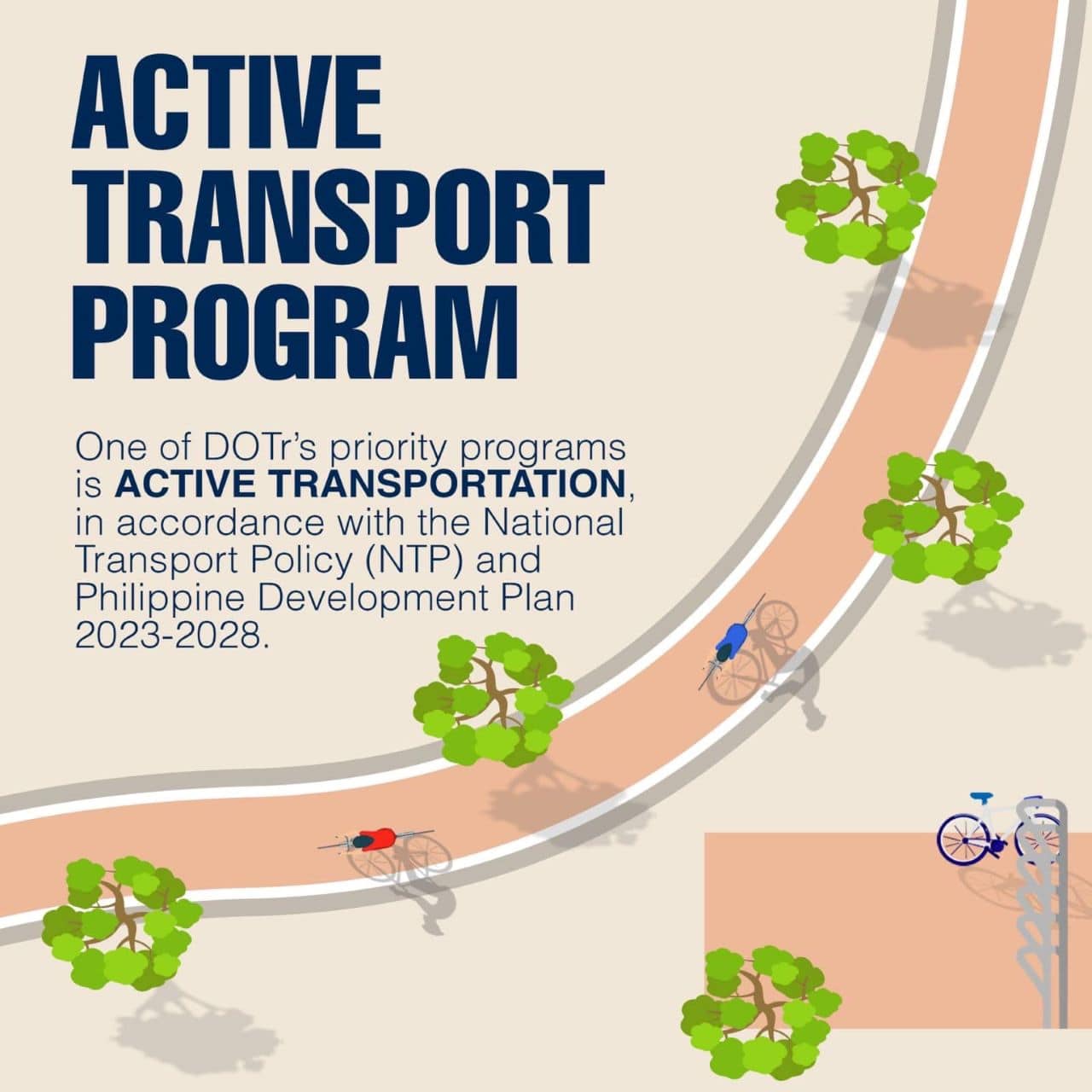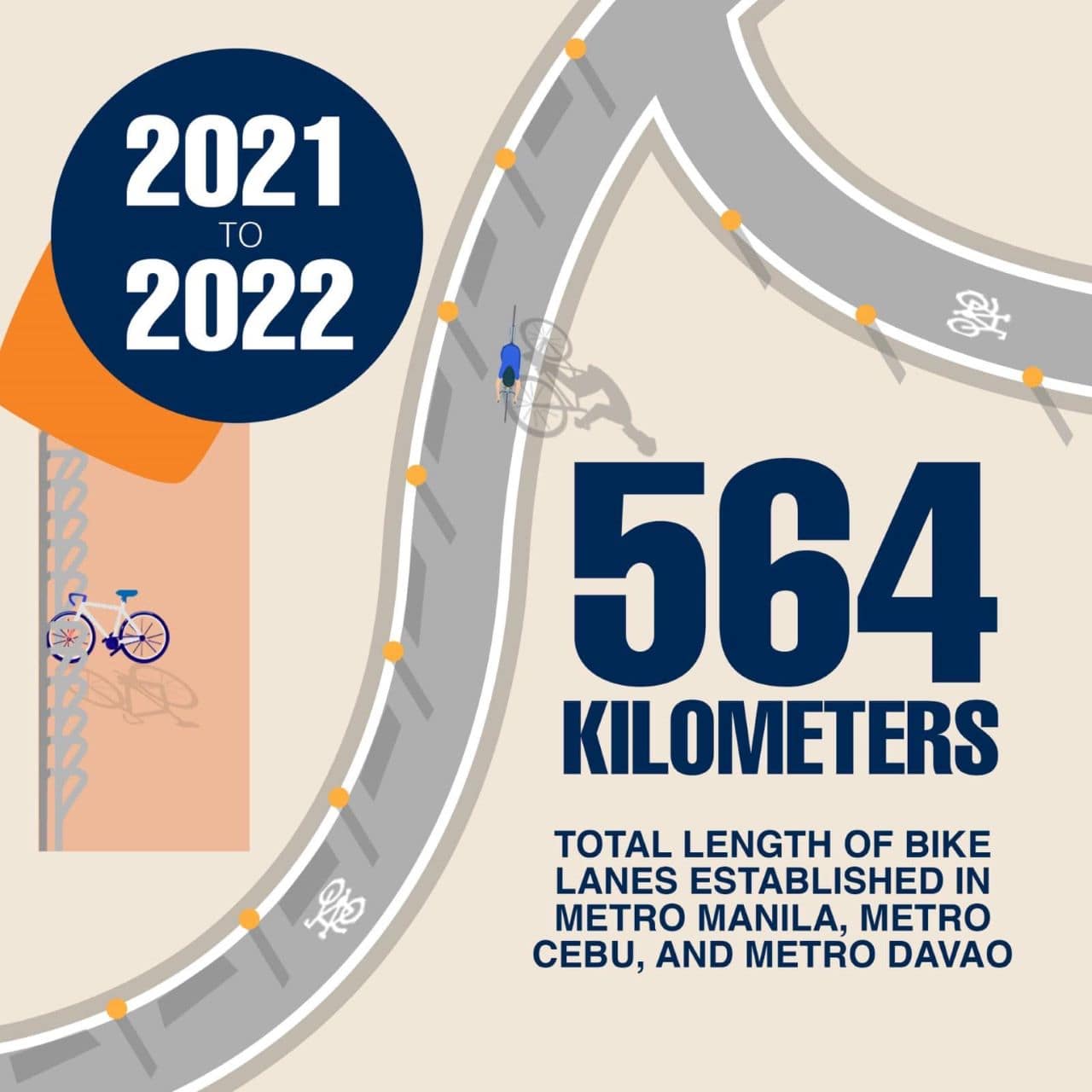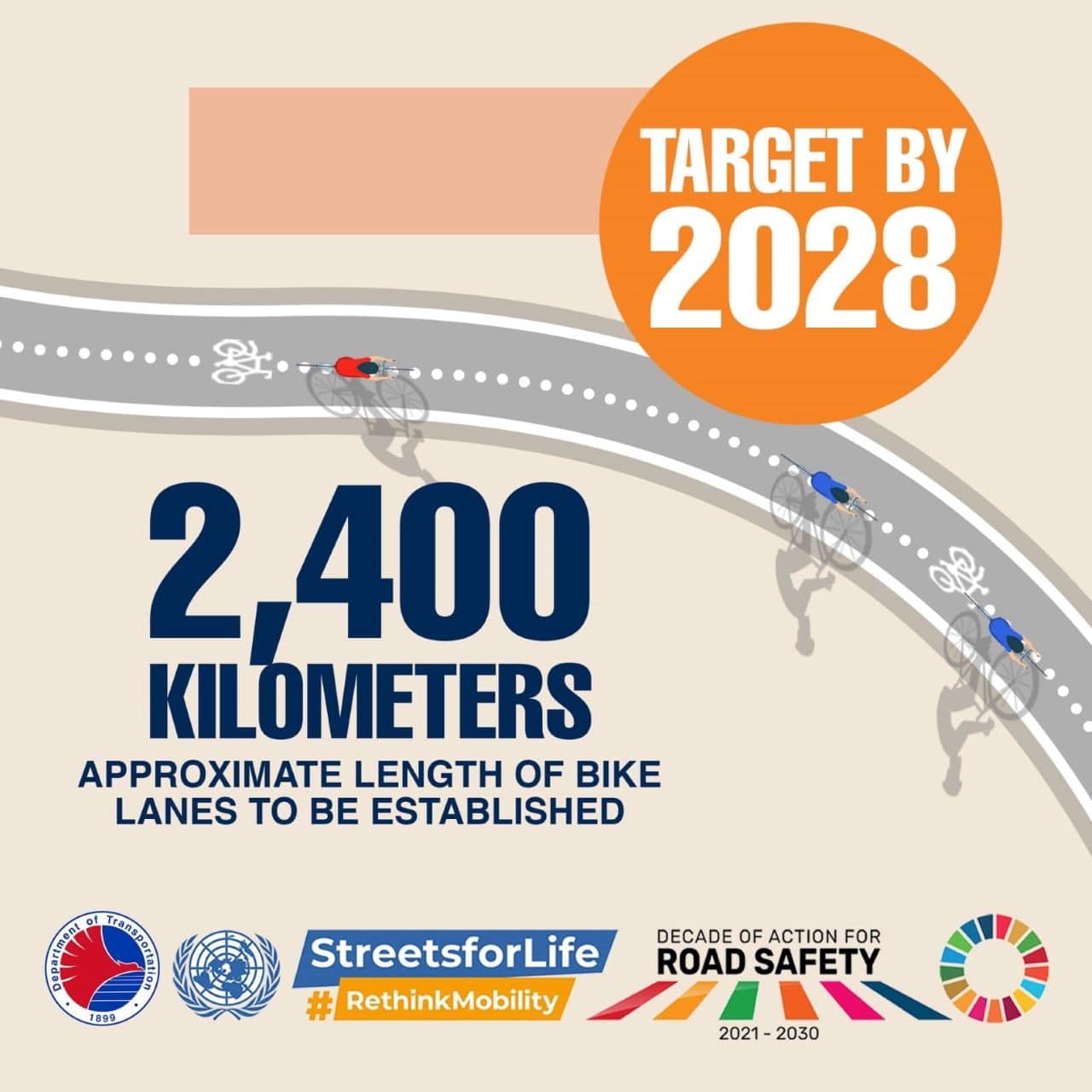
Bike lanes and active transport continue to be integral parts of the Department of Transportation’s (DOTr) platform. The pandemic saw an increase in bicycles and to this day, many have taken to pedaling as a means of transportation. Supporting them has become a local and national government endeavor, and as far as that goes, here’s what that DOTr has accomplished so far.
DOTr has established and will continue to support bike lanes and sustainable mobility

Photo: DOTr
Any and all progress in the active transport “sector” is a long thought-out plan. We mentioned the advent of bike lanes was during the height of the pandemic, and since then, the number of bikers grew. This warranted the DOTr to keep their eyes open as bicycling is also a means of transportation, and so, the agency has laid out a plan that stretches until 2028.

Photo: DOTr
Thus far, a total of 564 kilometers of bike lanes have been designated all across the country, including Metro Manila, Metro Cebu, and Metro Davao. Speaking from the side of Metro Manila, you can clearly see specific lanes where our pedaling pubic can (supposedly) travel safely. But we’ll get to more of that later.
The number you see above has taken two years to reach. If you’re thinking that’s pretty short or few, take into perspective that this distance is the same as traveling from Quezon City to Vigan and about halfway back to Quezon City again. Let that sink in. Granted that’s spread across three Metropolitan areas, but imagine how long every designated stretch is. Impressive, isn’t it?

Photo: DOTr
As the effort continues, the DOTr is aiming to mark another 2,400 kilometers worth of exclusive active transport and bike lanes in more areas across the country. All this work is another significant step towards safer and more accessible roadways not just for cyclists, but for pedestrians and personal mobility device users as well.
Again, speaking from the POV of someone from Metro Manila, plans for “rehabilitating” EDSA are already being studied. This along with real national policies that safeguard bikers and active transport that are in place should make traveling any Metro a lot easier, faster, and better. But going back, we must address a most important issue of not just implementing but actually enforcing these lanes’ proper use.
All plans are good and sound, but when they are rolled out and are simply ignored by everyone else, it is all for nothing. More law enforcement personnel? Better and stricter law enforcement? Perhaps the DOTr can also work with various government agencies to handle this pressing and dangerous issue. We’re pretty sure they don’t want good plans to fail due to lackluster implementation and law enforcement.
But we digress. We’ll take all of these accomplishments and plans for the future as a win, regardless.


